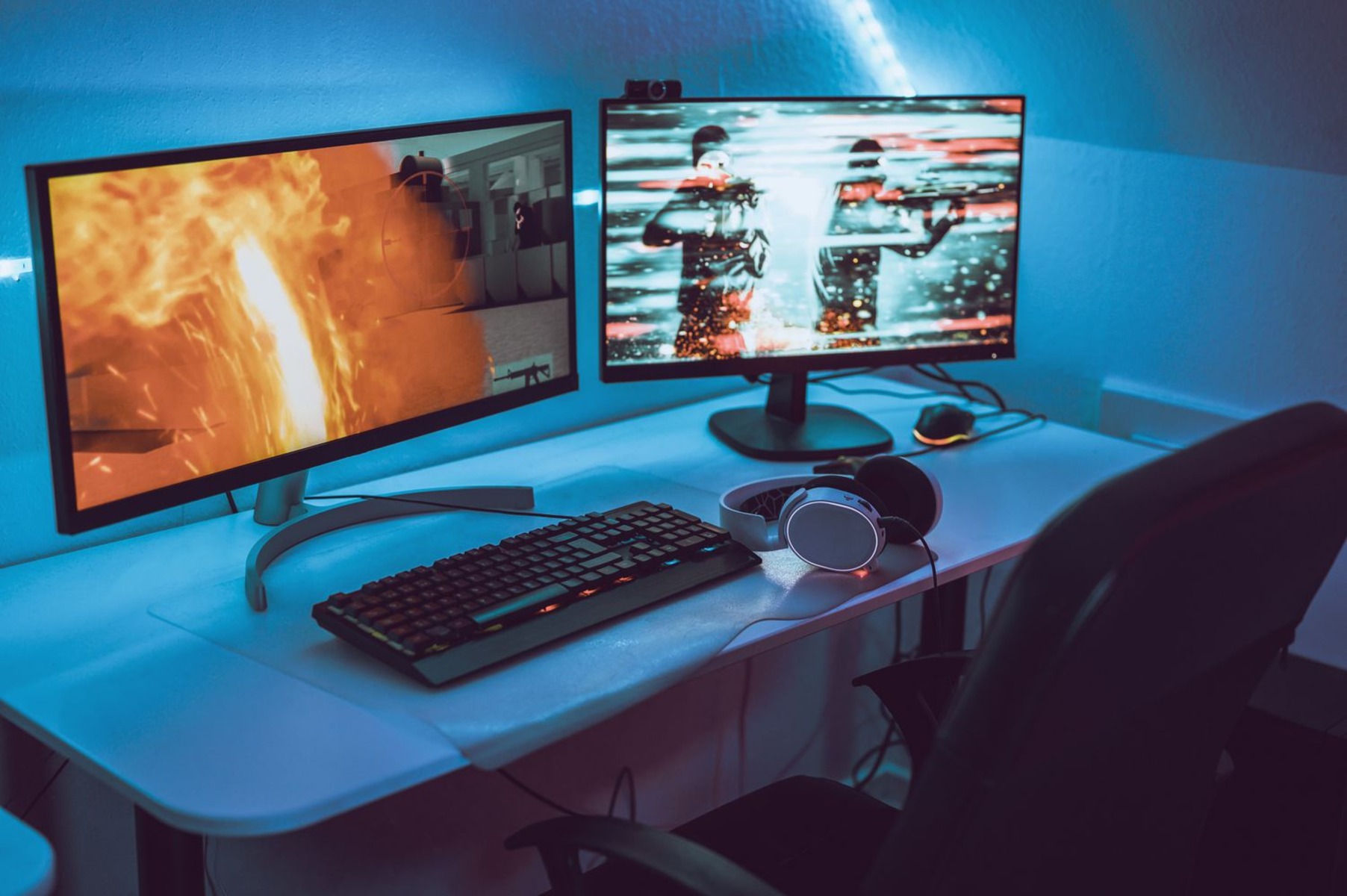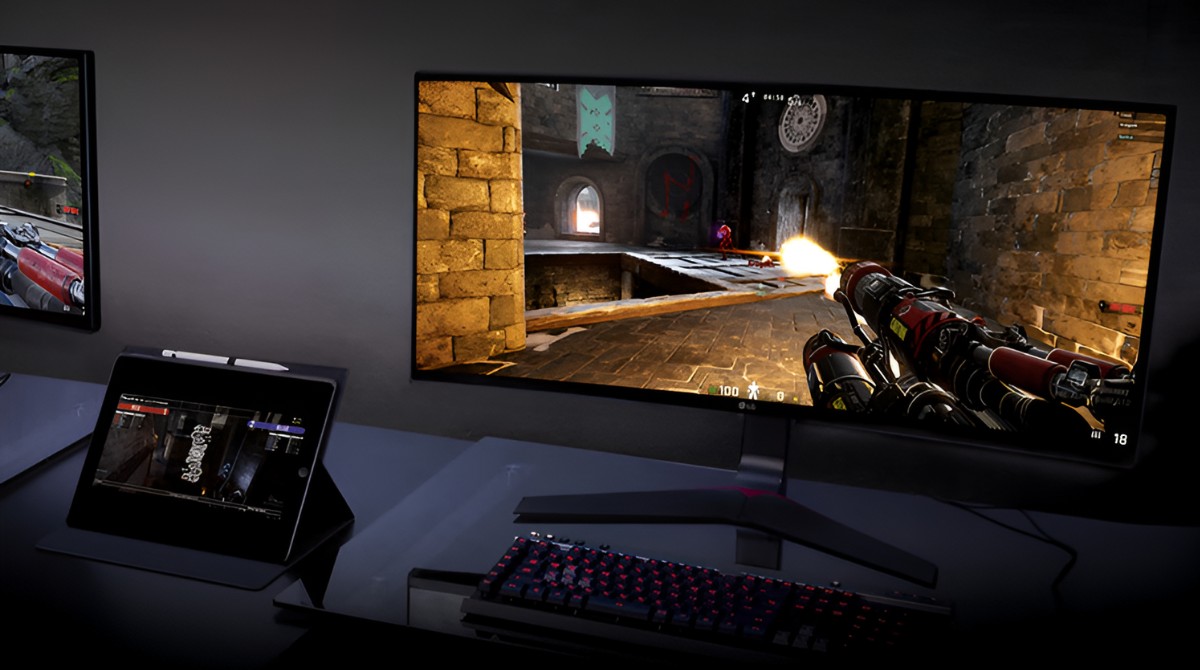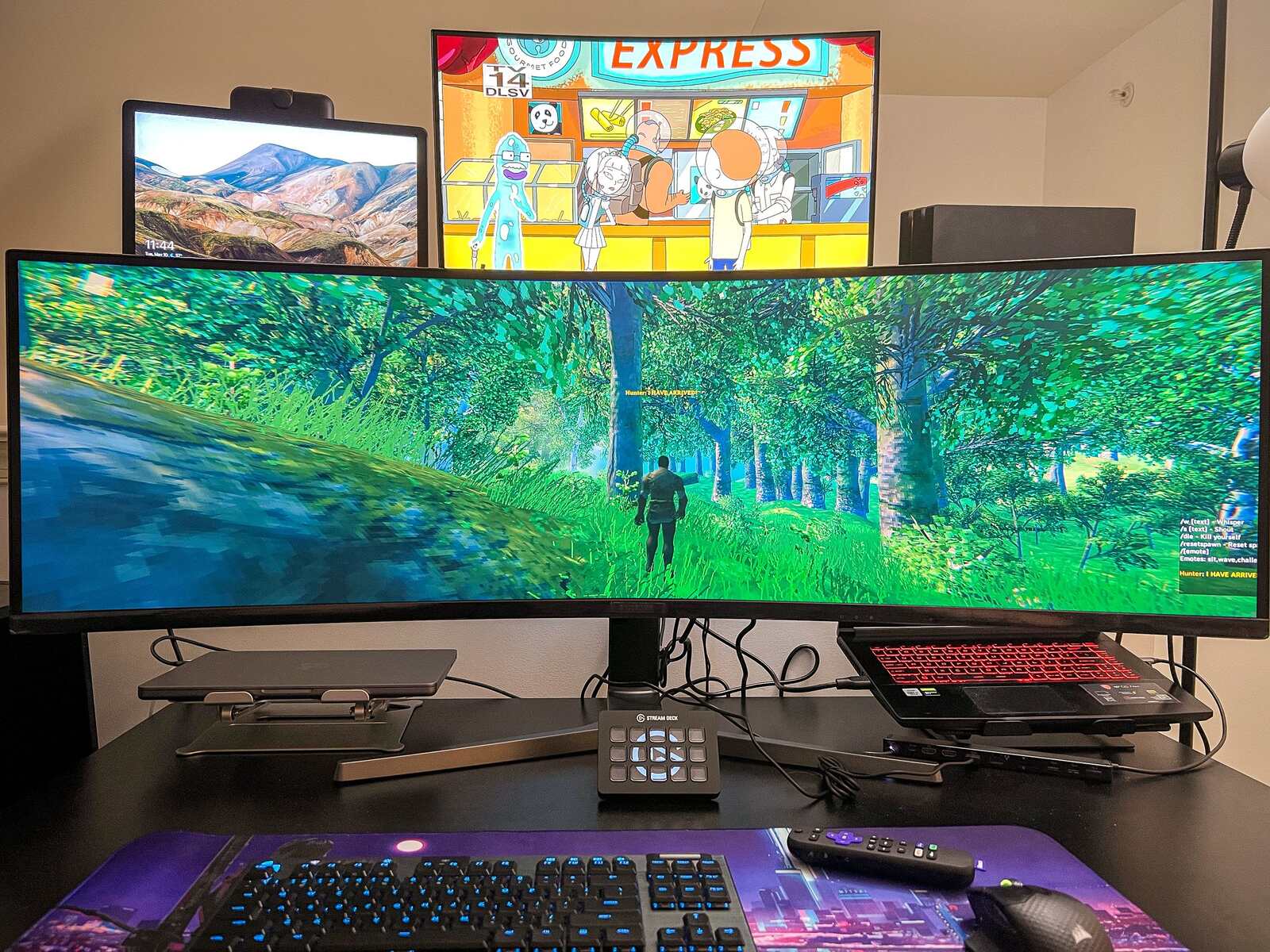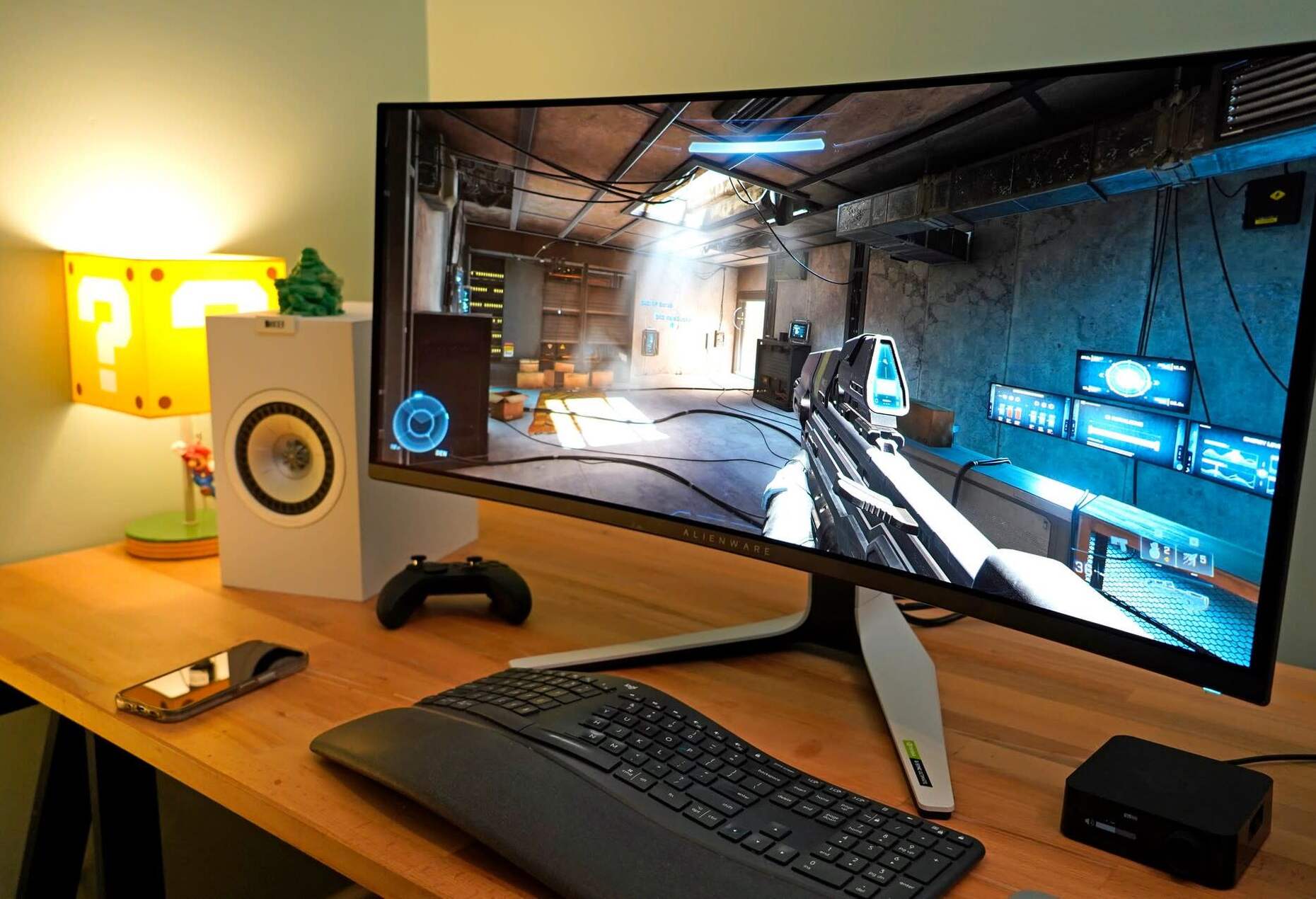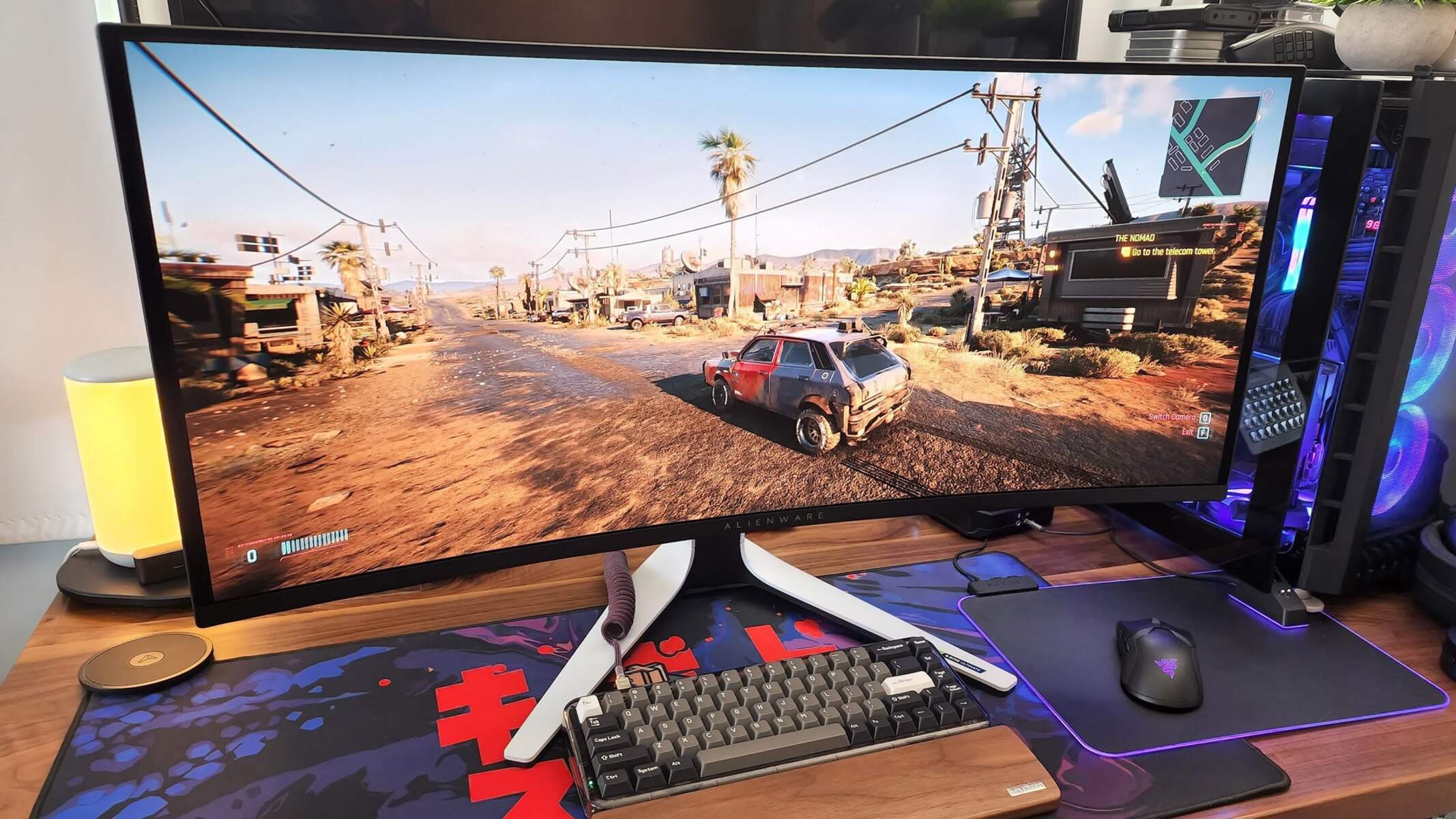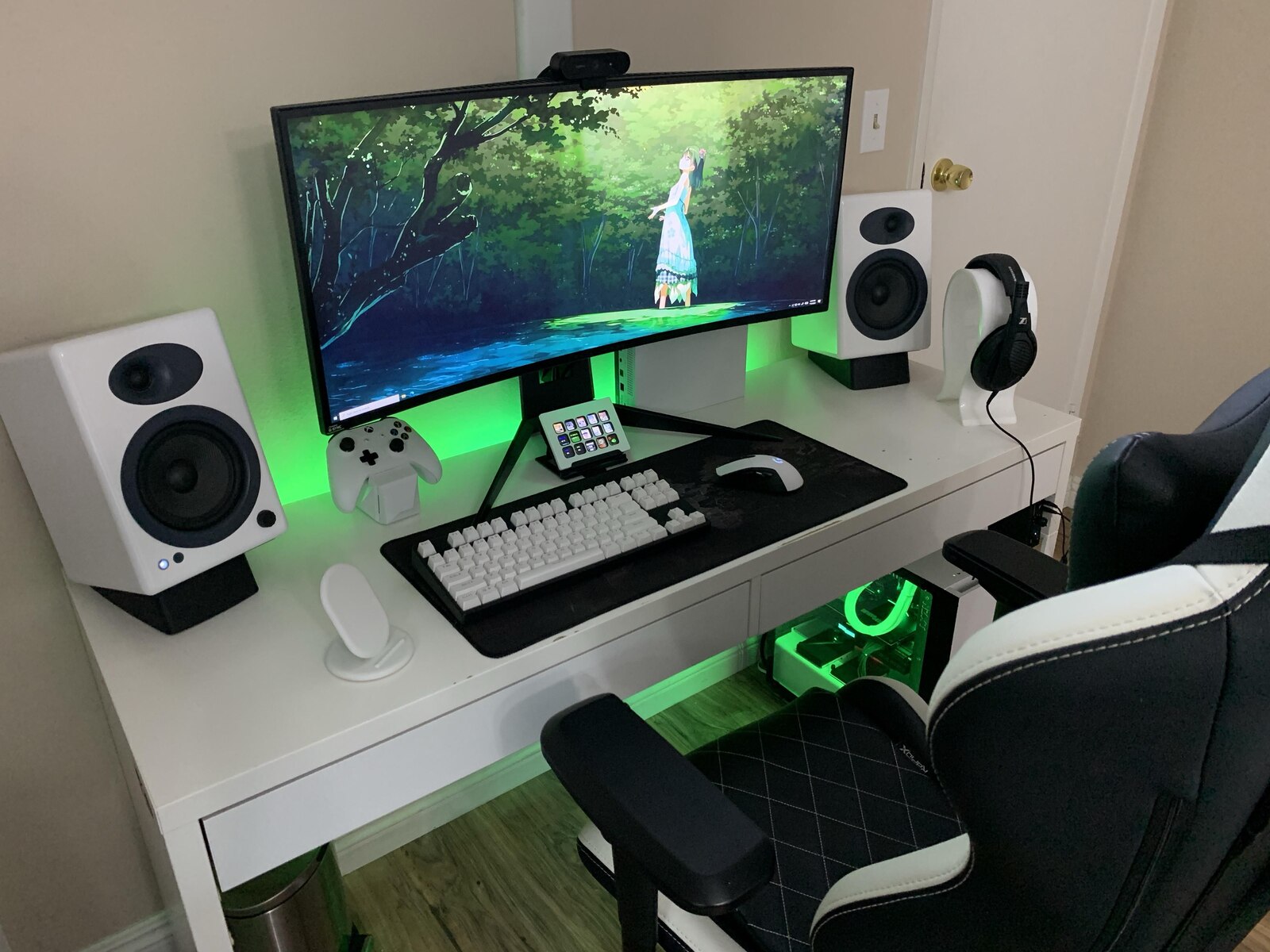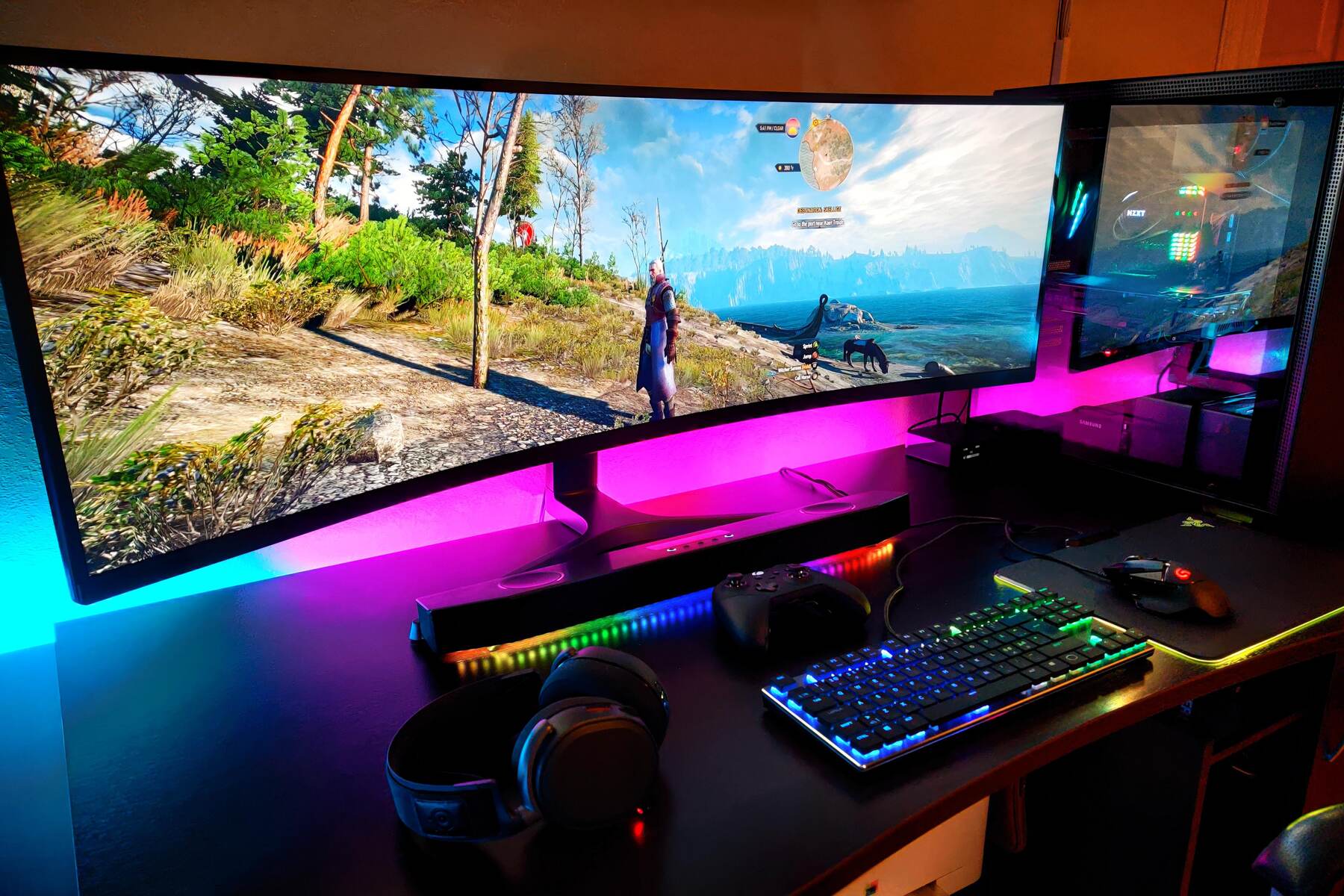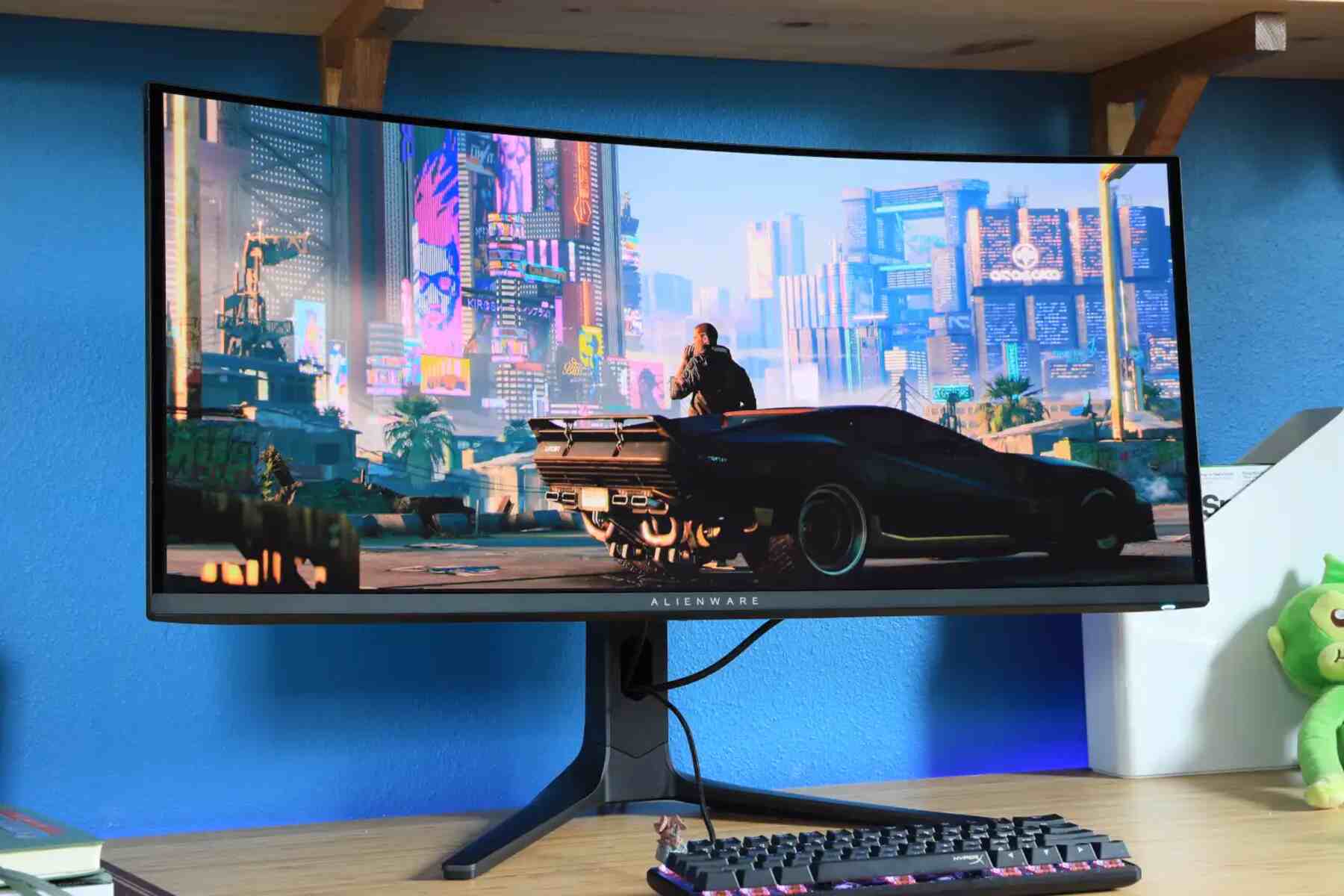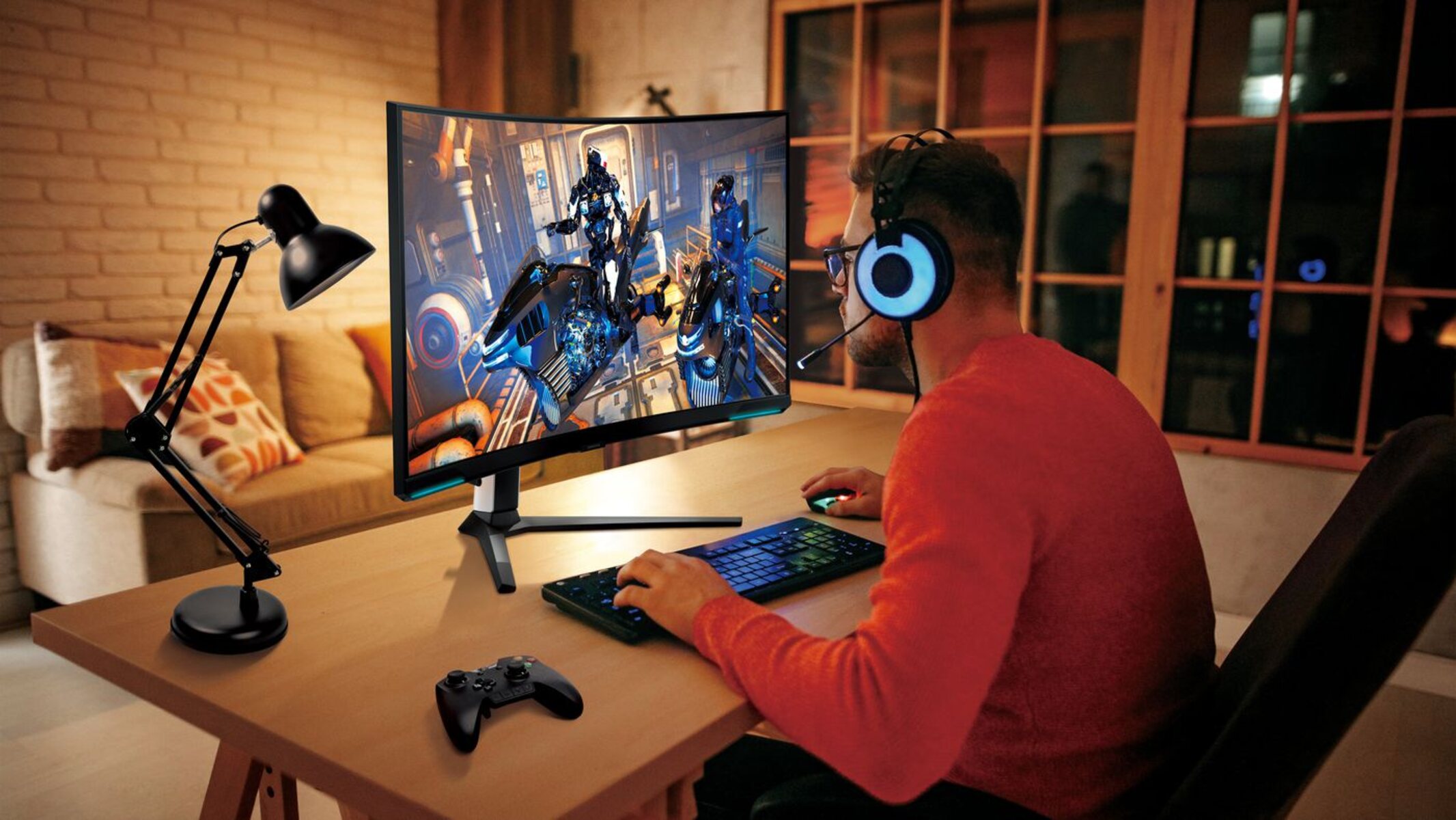Resolution
When it comes to gaming monitors, one of the most important factors to consider is the resolution. The resolution determines the clarity and level of detail you can expect from your gaming experience. A higher resolution means more pixels on the screen, resulting in sharper and more realistic visuals.
The most common resolutions for gaming monitors are Full HD (1920×1080), Quad HD (2560×1440), and Ultra HD or 4K (3840×2160). Full HD is suitable for casual gamers or those on a tight budget, providing decent image quality and smooth gameplay. Quad HD offers a significant improvement in detail and is ideal for gamers who want a balance between performance and visuals. Ultra HD or 4K displays are at the top end of the spectrum, delivering breathtaking visuals and unparalleled clarity, but they require powerful hardware to run smoothly.
It’s crucial to match the resolution to your gaming setup and hardware capabilities. A higher resolution might require a powerful graphics card to run games smoothly at maximum settings. On the other hand, opting for a lower resolution on a larger monitor might result in a pixelated image.
Whether you choose Full HD, Quad HD, or Ultra HD for your gaming monitor, make sure it aligns with your gaming preferences and PC’s capabilities. Consider the types of games you play, your graphics card, and your budget to determine the best resolution for an immersive gaming experience.
Refresh Rate
The refresh rate of a gaming monitor is a crucial specification that determines how many times the screen is refreshed in one second. It is measured in Hertz (Hz) and affects the smoothness and fluidity of the visuals during gameplay.
A higher refresh rate, such as 144Hz or 240Hz, offers smoother motion and reduces motion blur, resulting in a more immersive gaming experience. It allows for faster reaction times and provides a competitive edge, particularly in fast-paced games where quick reflexes are essential.
However, the benefits of a higher refresh rate are most noticeable when paired with a powerful graphics card that can consistently deliver high frame rates. If your graphics card struggles to reach high frame rates, investing in a monitor with a high refresh rate may not yield significant advantages.
If you mainly play slower-paced games or prefer single-player experiences, a lower refresh rate like 60Hz may suffice. This is also a good option for gamers on a budget, as monitors with higher refresh rates tend to be more expensive.
It’s important to note that to fully maximize the benefits of a high refresh rate, you should ensure that the games you play support it. Additionally, connecting your gaming monitor through DisplayPort rather than HDMI can sometimes be necessary to enable higher refresh rates.
Ultimately, the choice of refresh rate depends on your gaming preferences, PC capabilities, and budget. If you’re a competitive gamer or sensitive to motion blur, a higher refresh rate may be worth the investment. However, if you’re on a budget or play less demanding games, a lower refresh rate can still deliver a satisfying gaming experience.
Response Time
Response time is an essential factor to consider when choosing a gaming monitor. It refers to how quickly the monitor can change its pixels from one color to another. A lower response time ensures minimal motion blur and ghosting, providing a smoother experience during fast-paced gaming moments.
The standard response time for gaming monitors is measured in milliseconds (ms), with lower values indicating quicker pixel transitions. Typical response times range from 1ms to 5ms, with the lower end being more desirable for gamers.
Gamers who primarily play competitive, fast-action games will benefit from a lower response time monitor. A 1ms response time minimizes visible motion blur, ensuring that the image remains sharp and crisp even during quick movements. However, for casual gamers who play slower-paced games or are not as sensitive to motion blur, a slightly higher response time may still provide a satisfactory experience.
It’s important to note that response time can vary depending on the technology used in the panel. TN (Twisted Nematic) panels typically offer the lowest response times and are ideal for competitive gaming. On the other hand, IPS (In-Plane Switching) and VA (Vertical Alignment) panels may have slightly higher response times but provide better color reproduction and wider viewing angles.
When choosing a gaming monitor based on response time, it’s crucial to strike a balance between fast response times and other panel technologies that align with your gaming preferences. Consider the types of games you play, your hardware capabilities, and your budget to make an informed decision.
Panel Type
The panel type of a gaming monitor plays a significant role in determining the overall visual quality and viewing experience. There are three main types of panels commonly used in gaming monitors: TN (Twisted Nematic), IPS (In-Plane Switching), and VA (Vertical Alignment).
TN panels are known for their fast response times and high refresh rates, making them ideal for competitive gaming. They generally have the lowest production cost, making TN monitors more budget-friendly. However, they have narrower viewing angles and may offer somewhat less vibrant colors and contrast compared to other panel types.
IPS panels, on the other hand, offer superior color reproduction, wider viewing angles, and better overall image quality. They provide more accurate and vibrant colors, making them perfect for immersive gaming and visual work. However, IPS panels typically have slower response times, which may result in slight motion blur during fast-paced gaming moments.
VA panels strike a balance between TN and IPS, offering better color reproduction than TN panels and faster response times than IPS panels. They excel in contrast ratios and can produce deep blacks, which enhances the visual experience, especially in darker gaming environments. However, VA panels may have slightly slower response times than TN panels and may suffer from some motion blur.
When choosing a gaming monitor based on panel type, consider your gaming preferences and needs. If you prioritize fast-paced competitive gaming, a TN panel with its fast response times may be the best choice. If color accuracy and wider viewing angles are more important, an IPS panel might be the better option. And if you are looking for good contrast ratios and deep blacks, a VA panel is worth considering.
It’s important to note that panel types can also affect the price of the monitor. Generally, TN panels are more affordable, while IPS panels tend to be more expensive. VA panels fall in the middle range.
Connectivity Options
When selecting a gaming monitor, it’s important to consider the available connectivity options to ensure compatibility with your gaming setup and devices. The connectivity options determine how you can connect your monitor to your gaming console, PC, or other devices, allowing for seamless connectivity and optimal gaming performance.
The most common connectivity ports found in gaming monitors are HDMI and DisplayPort. HDMI is a widely used standard for audio and video transmission, making it compatible with most gaming consoles, PCs, and media devices. It supports high-definition video and audio signals, providing a convenient plug-and-play solution for connecting your devices.
DisplayPort, on the other hand, offers similar capabilities to HDMI, but with added advantages for gaming. It supports higher refresh rates and resolutions, making it ideal for gaming enthusiasts seeking the best visual experience. DisplayPort is commonly found on gaming PCs and high-end monitors, providing better compatibility for gaming graphics cards and advanced gaming features.
Additionally, some gaming monitors may include other connectivity options such as DVI (Digital Visual Interface) and USB ports. DVI is an older connection standard that can provide a reliable and high-quality video signal, but it doesn’t transmit audio. USB ports can be useful for connecting peripheral devices, such as gaming mice, keyboards, and controllers, directly to your monitor for easy access.
When considering connectivity options, it’s important to determine the devices you plan to connect to your gaming monitor and ensure compatibility. You should also consider the resolution and refresh rate that your gaming setup supports and choose the appropriate connectivity options to fully utilize the capabilities of your hardware.
Lastly, it’s worth mentioning that some monitors may also include built-in speakers or audio output jacks for connecting external speakers or headphones. This can be a convenient feature for those who prefer an all-in-one gaming setup without the need for separate audio devices.
Gaming-Specific Features
Gaming monitors often come with additional features designed to enhance the gaming experience. These gaming-specific features can vary depending on the model and brand, but here are some common ones to consider when choosing a gaming monitor.
One popular feature is a high refresh rate or variable refresh rate technology, such as AMD FreeSync or NVIDIA G-Sync. These technologies synchronize the monitor’s refresh rate with the graphics card, reducing screen tearing and providing a smoother, more fluid gameplay experience.
Another important feature is low input lag, which minimizes the delay between pressing a button on your controller or keyboard and the action appearing on the screen. This can greatly improve responsiveness and precision in fast-paced games.
Some gaming monitors also offer customizable game modes or presets tailored for different genres, such as FPS (First Person Shooter), RPG (Role-Playing Game), or Racing games. These modes optimize the color settings, contrast, and brightness to enhance the gaming experience based on the specific game genre.
In addition, certain gaming monitors feature built-in blue light filters or flicker-free technology to reduce eye strain during long gaming sessions. These features can help minimize eye fatigue and improve overall comfort.
The presence of adjustable stands or VESA mount compatibility can also be beneficial, as they allow you to position the monitor at the most comfortable viewing angle and height.
Other features to consider include built-in USB hubs for conveniently connecting peripheral devices, integrated cable management systems to keep cables organized, and HDR (High Dynamic Range) support for a wider range of colors and better contrast levels.
When selecting a gaming monitor, it’s essential to assess which of these gaming-specific features align with your gaming preferences and needs. Determine which features are important to you and prioritize them in your decision-making process.
Price Range
Gaming monitors come in a wide range of prices to suit different budgets and needs. The price of a monitor is typically influenced by factors such as size, resolution, panel type, refresh rate, response time, and additional gaming features.
Entry-level gaming monitors are often more affordable and offer decent performance for casual gamers. These monitors usually have lower resolutions, slower refresh rates, and basic features. They can be a suitable option for those on a tight budget or who don’t require the highest level of performance.
Mid-range gaming monitors strike a balance between price and performance, offering a better gaming experience without breaking the bank. They generally have higher resolutions, faster refresh rates, and improved response times. Additionally, they may include some gaming-specific features like adaptive sync technology.
At the top end of the price spectrum, high-end gaming monitors cater to gamers who demand the best visuals and performance. These monitors often feature higher resolutions, fast refresh rates, quick response times, and advanced gaming technologies like G-Sync or FreeSync. They may also provide additional features like HDR support and superior color accuracy.
It’s important to determine your budget and balance it with your gaming requirements. Consider what features and specifications are essential to your gaming experience, and then find a gaming monitor that fits within your price range. It’s worth investing in a monitor with slightly higher specifications if you can afford it, as it can enhance your gaming enjoyment and future-proof your setup.
Additionally, keep an eye out for sales and promotions, as gaming monitors often go on discount during certain times of the year, such as Black Friday or Cyber Monday. This can be an opportunity to save money while still getting a high-quality monitor.
Remember, while price is an important consideration, it’s essential to strike a balance between your budget and the features you desire. Take the time to research and compare different options to find the best value for your money.
Size and Design
The size and design of a gaming monitor can significantly impact your gaming experience and the overall aesthetics of your gaming setup. When choosing a gaming monitor, it’s essential to consider the size that best suits your gaming needs and the design that matches your personal style.
The size of the monitor is measured diagonally and typically ranges from 21 inches to 34 inches or even larger. The size you choose depends on your preferences and the available space on your gaming desk. A larger screen can provide a more immersive gaming experience, while a smaller screen may be more suitable for tight spaces or if you prefer to sit closer to the monitor for increased visibility.
Another aspect to consider is the monitor’s aspect ratio. The most common aspect ratios for gaming monitors are 16:9 and 21:9. A 16:9 aspect ratio is ideal for most gaming scenarios and offers a standard widescreen experience. On the other hand, a 21:9 ultra-wide aspect ratio provides an immersive gaming experience with a wider field of view, particularly for games that support this aspect ratio.
The design of the gaming monitor should also be taken into account, as it can complement your gaming setup and reflect your personal style. Some monitors feature a sleek and minimalistic design with thin bezels, providing a more immersive and seamless visual experience. Others may have unique aesthetic elements, such as RGB lighting or customizable color accents, allowing you to personalize the look of your gaming station.
Additionally, consider the ergonomics of the monitor, including tilt, swivel, and height adjustment options. A monitor with flexible adjustments can improve your comfort during long gaming sessions and help prevent neck and back strain.
It’s important to find the right balance between size, aspect ratio, and design that suits your gaming preferences and fits well within your gaming space. Consider your gaming setup, desk space, and personal preferences when selecting the size and design of your gaming monitor.
Display Quality and Color Accuracy
Display quality and color accuracy are important considerations when choosing a gaming monitor. The quality of the display directly impacts your visual experience and the level of detail and vibrancy you can expect from your games.
One aspect to consider is the brightness level of the monitor. A higher brightness level ensures a more vivid and immersive gaming experience, particularly in well-lit environments. Look for monitors with a brightness rating of at least 250 nits for optimal performance, although some high-end monitors can reach brightness levels of 400 nits or more.
Color accuracy is another crucial factor. A monitor with good color accuracy reproduces colors faithfully to their intended and truest representation. This is particularly important for games that rely heavily on visual cues and accurate color rendering. Look for monitors with an sRGB color gamut coverage of at least 99% to ensure accurate and vibrant colors.
The contrast ratio is also important as it determines the ratio between the darkest and brightest parts of an image. A higher contrast ratio provides better distinction between colors and enhances overall image quality. Look for monitors with a contrast ratio of at least 1000:1 for optimal performance.
Panel technologies, such as IPS (In-Plane Switching) and VA (Vertical Alignment), tend to offer better color reproduction and wider viewing angles compared to TN (Twisted Nematic) panels. If accurate color representation and wide viewing angles are important to you, consider opting for a monitor with IPS or VA panel technology.
It’s worth noting that some gaming monitors come with built-in calibration options or factory-calibrated settings, which can help fine-tune the display for more accurate colors and optimal visual performance out of the box.
To ensure the best display quality and color accuracy, it’s recommended to research and read reviews from trusted sources that include detailed information about a monitor’s color gamut coverage, contrast ratio, and overall display quality. This will help you make an informed decision based on your preferences and requirements.
Adaptive Sync Technology
Adaptive Sync technology, commonly referred to as AMD FreeSync or NVIDIA G-Sync, is a feature available in many gaming monitors that helps to eliminate screen tearing and stuttering, providing a smoother and more enjoyable gaming experience.
Screen tearing occurs when the monitor’s refresh rate and the frames per second (FPS) of the game are out of sync. This can result in a visible horizontal line on the screen, disrupting the smoothness of the image. With Adaptive Sync technology, the monitor’s refresh rate dynamically adjusts to match the FPS of the game, eliminating screen tearing and providing a more fluid and immersive gaming experience.
AMD FreeSync is compatible with AMD graphics cards, while NVIDIA G-Sync is designed for NVIDIA graphics cards. Both technologies work in a similar manner, but it’s important to note that you will need a compatible graphics card to take advantage of the respective technology.
Choosing a monitor with Adaptive Sync technology can greatly enhance your gaming experience, especially in fast-paced games with varying frame rates. It reduces input lag, improves responsiveness, and provides smooth gameplay, allowing you to react quickly to in-game events.
However, it’s crucial to ensure that your graphics card supports the specific Adaptive Sync technology used by the monitor you’re considering. While some gaming monitors may support both FreeSync and G-Sync, others may only support one or the other.
Additionally, it’s worth noting that Adaptive Sync technology may only work within a specific range of refresh rates. This range varies depending on the monitor, so it’s important to refer to the manufacturer’s specifications and choose a monitor with a wide enough range to accommodate your gaming requirements.
In summary, if you have a compatible graphics card, investing in a gaming monitor with Adaptive Sync technology can greatly improve your gaming experience by eliminating screen tearing, reducing stuttering, and delivering a smoother and more responsive gameplay.







